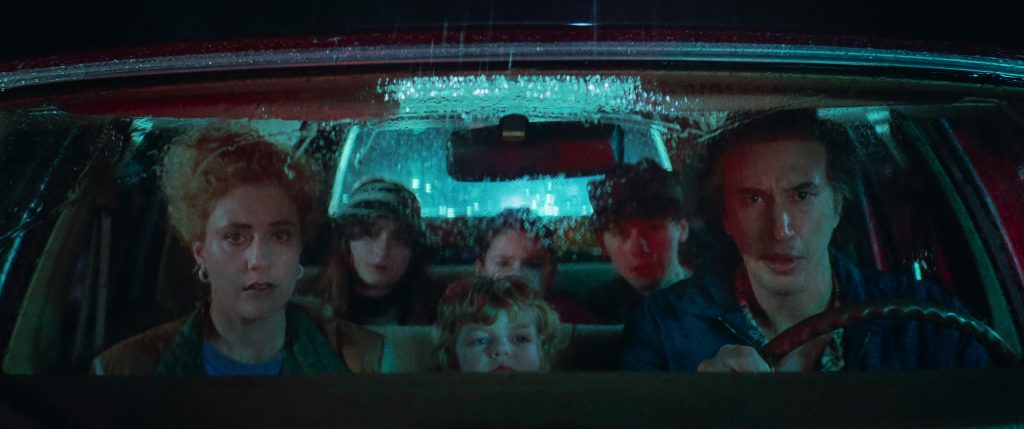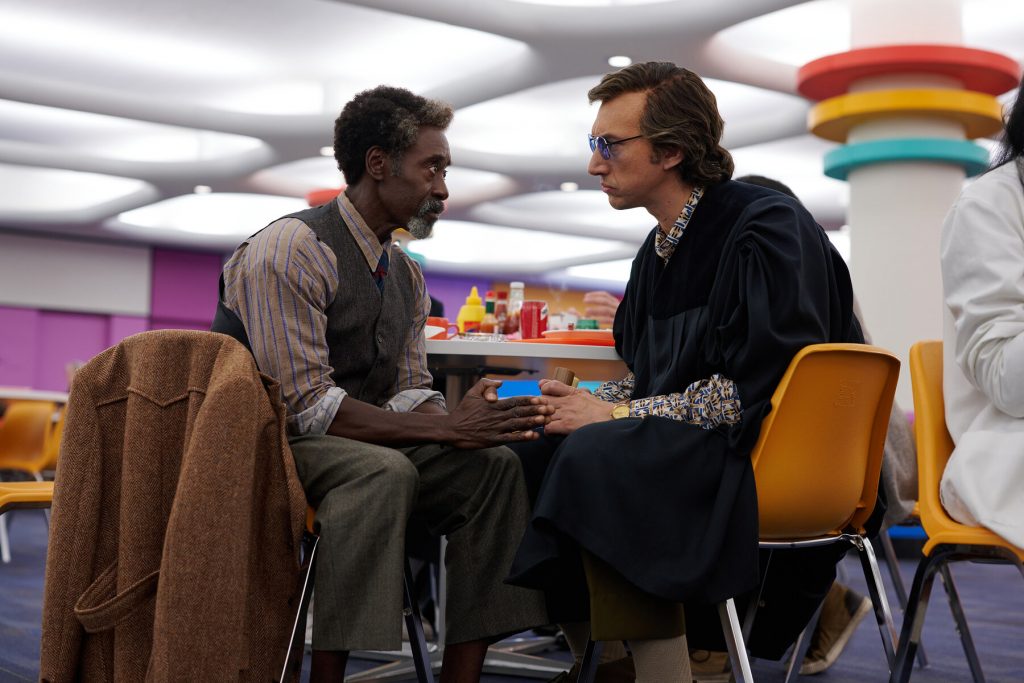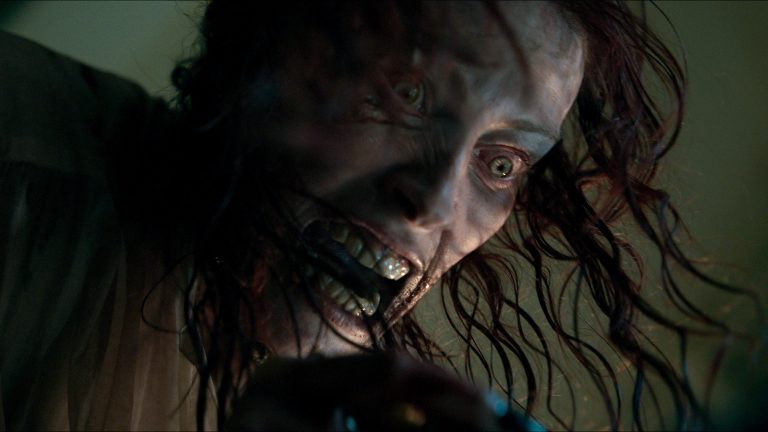White Noise Netflix Ending Explained: Noah Baumbach’s newest is the talk of the town. Despite a theatrical release and several festival screenings, it has come to the modern stay-at-home viewer’s doorstep through Netflix. Now is its real litmus test, and we are here to make your experience of having watched the film more meaningful. Its absurdist elements are taken straight from the source material, DeLillo’s 1985 novel. The realization of the incredulous plot has the potency to give you an eerie deja vu with what happened in the past three years. White Noise is one of the year’s unique cinematic experiences, even though it can sometimes be too quirky to process.
To satisfy your urge to make sense of everything that went down, here is the ending explainer for White Noise on Netflix that will clear up all your doubts about the plot, themes, and other existential questions that the film poses. Be suitably warned, SPOILERS ahead!
The Different Sections that makeup White Noise
Intellectual Fallacy
This section is solely fought between Siskind and Gladney. Both professors are at the peak of their “game” and lauded experts in their fields. However ridiculous their views might look, Gladney and Siskind hold sway over their listeners. Their debates are furious yet, at their very core, meaningless. They give weight to issues that do not have the capability to be validated. They represent the factions of the world that indulge other people’s attention to validate their own beliefs into something. It is an allegory to the idea that everyone wants to be understood, heard, and respected by others. You are a hero in your own narrative, like Siskind and Gladney.

Baumbach’s focus in this section, the setup of the film, was to unlock the viewer’s predetermined notions about the world and its ideological cores. Keep that locked away somewhere before you start watching the film. It is all a fallacy in the end. You are being lied to and are lying to others around you with what you believe.
The Airborne Toxic Event
This is the part where you will feel the strongest sense of deja vu. COVID was a grossly mismanaged event that consumed a lot of joy from the world. Life would never be the same after this, but heads of state and governments ensured that there was no way the general public could be settled. Something or the other came along and kept us involved. Death spun a web around us, and we watched hopelessly in fear and deep clutches. This happens when a truck carrying flammable material crashes into a speeding train. The result was an airborne toxic event that could impact the lives of every resident of the city.
People fell to panic and were first ordered out of their houses, despite the belief that they would be safe when inside. But when more information was discovered, they were sent back. This game was like the COVID situation when people have now started moving on.
Dylarama
This word combines the words “dylar” and “dilemma.” Babette reveals to her family why she took the drug and what it means in the scheme of White Noise. It is a more embracing concept where the film explores what it means to live in fear of death and how it could change the sentiments of people. It plays out in a macabre reality in your life that grasps you with fear. Gladney, and the novel, assert that once a plot is set in motion, it only moves “deathward.” All courses of action that center around a plan ultimately end in death.
Understanding the philosophy behind Hitler’s comparison to Presley
It is quite phenomenal how Baumbach narrates the fiery duet between Jack and Murray when the above two icons of the times – for very different reasons and people, of course – were mentioned in the same breath. It still forms part of the first section of White Noise, when the academic upmanship went to another level. It represents ideas at two levels: one, what it says about the two men, and second, how Presley and Hitler are alike. By keeping them side by side, we see how empty the debate was and how delusional they were about their subjects. Both Jack and Murray did not find anything tangible in their discussions and always held on to abstract concepts, making their discourse sound superior with fancy words.
Straight up, the entire scene is unique because the film is critical of academic stalwarts using their expertise to lead people astray. This directly connects to what happened with COVID specifically and how the world of academicians is constructed. The second level of exploration is the juxtaposition of Presley and Hitler being “icons.” As bizarre as the comparison sounds and feels, it actually has a sound philosophical base.
Gladney mentions something about the “magic of icons” when he talks about Hitler. In philosophy, charming leaders like this gain popular attention through speech and dialogue, just like Jack gets your attention both in the film and the novel. Although the structure is complex, the dialogue is revealing, and you must interpret it by considering everything else to be “white noise.” Hitler and Presely both had this reaction in their audiences. The intensity of the charm was such that it was impossible not to become completely focused on their dictions. This herd mentality is mocked in White Noise.
Without being insulting, the very nature of how we think and perceive is so irrational that nothing could ever straighten it out. Something or the other will always dominate, and there is no absoluteness to any truths in life. The world works in mysterious ways; that is why someone like Hitler can be compared to Presley!
Decoding the Acceptance of the Inevitability of Death in White Noise
This is one of the most discussed things around White Noise currently. Our fear of this inevitability is a contradiction in itself. Why would you fear something that you know will eventually happen? Uncertainty about when it will happen keeps you light-footed and always ready to avert danger. Who really knows, though? Waiting for an event like this to happen is giving in fear. But the climax of the film leads Babette and Jack closer to this revelation. The manner in which this materializes is the soul of the film.
Death is an event in a human being’s life that really unites those around them. It is not something that separates the family but brings them closer. Who goes first from the living world was a subject of intense too and fro between Jack and Babette. Almost after the movie plays out, they realize it is insignificant. Living in fear of death will always keep you unsettled about the future. We must come to a realization that one day it will be our turn, and life will still go on. This simple idea is behind all the whack-a-mole circus in White Noise and something for you to ponder over as well.
White Noise Ending, Explained
What is Dylar, and why does Babette take it?
White Noise drives towards the subject of death, as Gladney claims before in the movie (that all plots, even “narrative plots,” lead to death). We start from the point when Babette finally opens up about why she was consuming Dylar and what it did do for her. She saw an advert and met someone called Mr. Gray. He told them about this “wonder drug,” which can root out the fear of death in a person’s mind. Watching Babette narrate that and believe in it reminds one of Sara Goldfarb from Requiem for a Dream (2000). Desperation to get results quickly destroyed both women. In this case, Babette’s marriage. She and Gray agreed on a transactional exchange: the drug for sex.
Every night she would spend with him would give her a bottle of Dylar. She follows all directions to consume it the way it is supposed to, but she cannot see tangible effects. It turned out to be a sham, and that is why the “affair” eventually stopped from her side. Jack is livid and confused. His primal protective instincts kick in, and he shoots the man in the same motel where Babette and Gray used to meet. The wife watches him do it. But quite unbelievably, the two then take him to a hospital. In the book, DeLillo describes it as “the sudden realization of the needless loss of life.” Nothing happens to them, and then we see them break into a dance number at the A&P supermarket.
In a very weird way, White Noise’s ending is about “nothing.” According to DeLillo and Baumbach, making sense of things around us is futile. There are so many things that self-contradict in the world that trying to peel back the layers will only drive one mad. Even though the movie houses some crazy acts and the most detail-oriented plotting in recent cinematic history, everything leads to a state of “non-existence”. It is frustrating to think that something so bizarre and full of life could end up being about nothing. But that is the real catch in White Noise’s ending.
White Noise is a cautionary tale, but not in the way that is perceived for most of the film. It is a caution to come to terms with the idea of death and not to spend every day fearing it but instead celebrating that we, as humans, understand this outcome. The irony of life is what brings the couple back together in the end; that is how relationships survive craziness. The dancing sequence was perhaps a metaphorical indication of how we get past things and soldier on in life. It is a sweet, simple thing that does not need too much explanation: it just happens!






![Twenty-Four Eyes [1954] Review – The Collective Suffering and Healing of a War-Scarred Nation](https://79468c92.delivery.rocketcdn.me/wp-content/uploads/2020/07/Twenty-Four-Eyes-1954-768x579.jpg)

